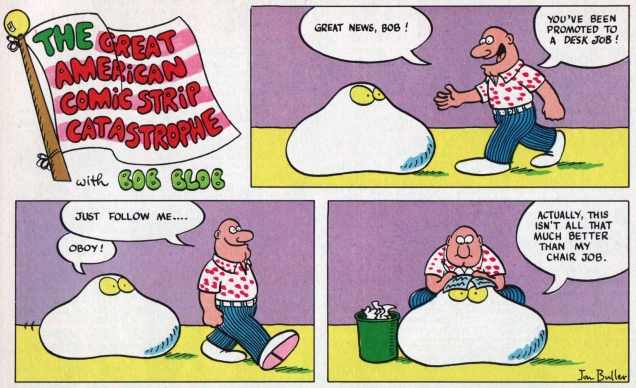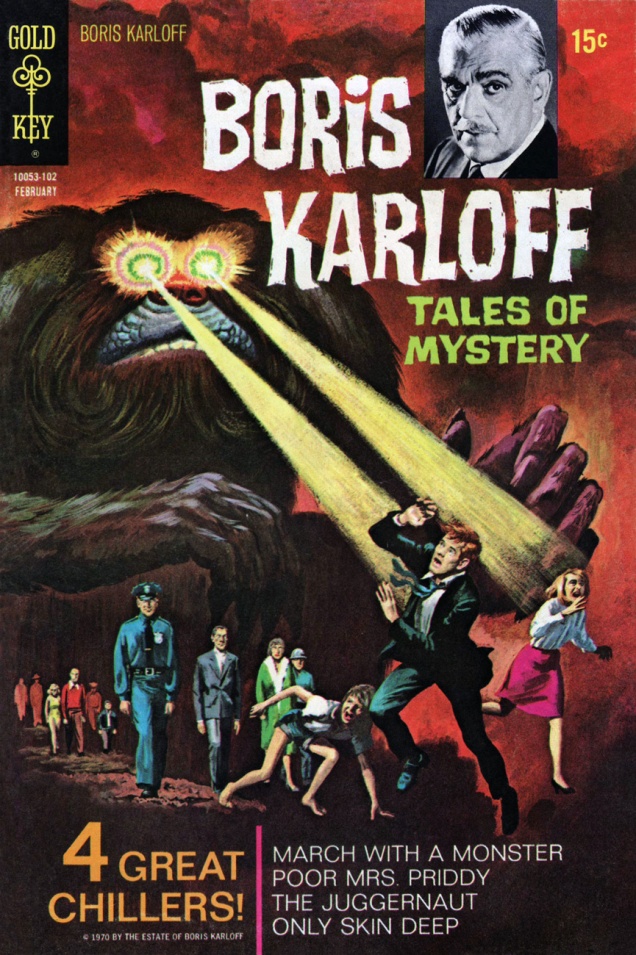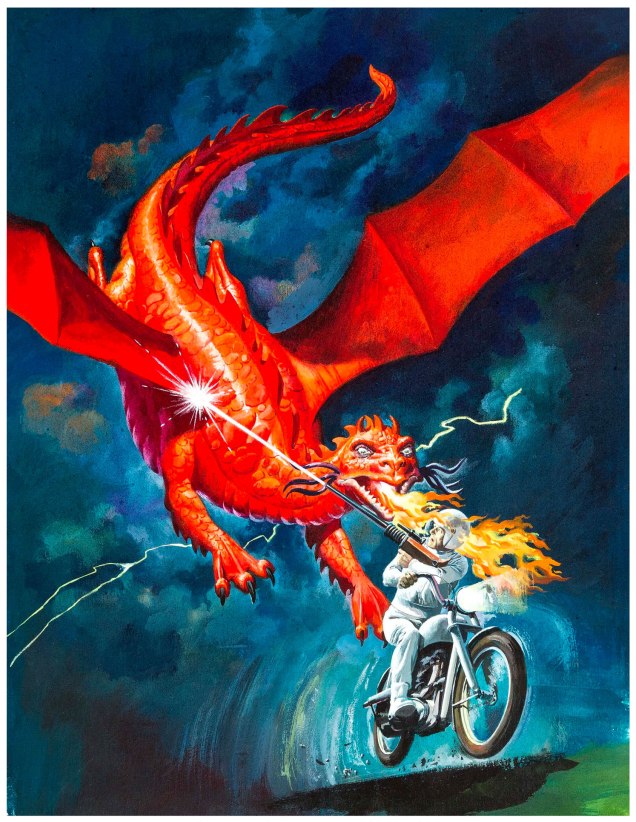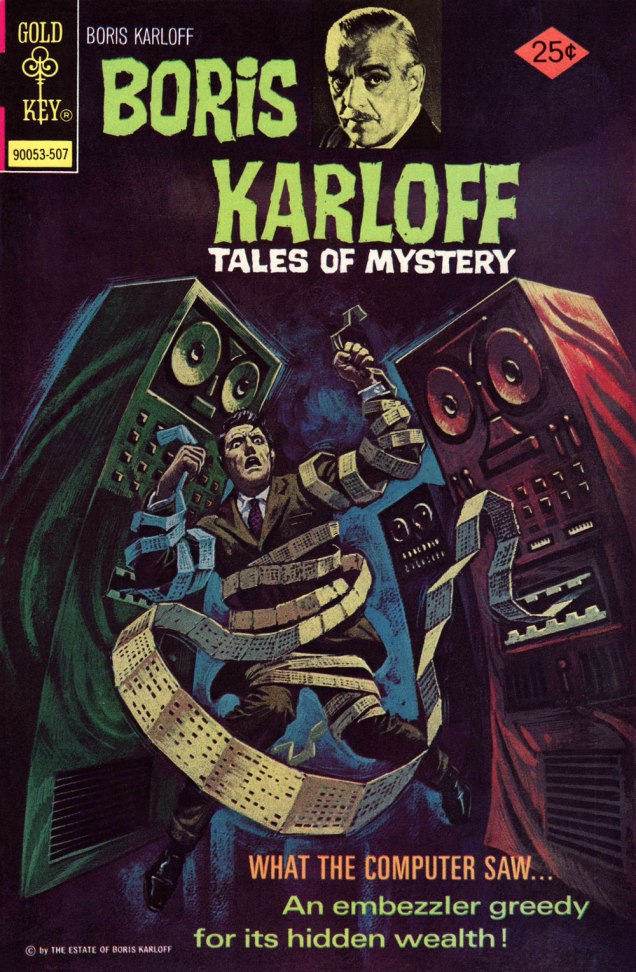Welcome to Tentacle Tuesday! We now have an official logo for T.T., courtesy of my husband and fellow blogger. It’s brand-spanking new, so here it is in a fairly high resolution.

Give him a round of applause… oh, what’s that, it’s hard to applaud with tentacles? Okay, a round of « squish, squish », then.
Let’s begin (proper) with « The Thing on the Roof », adapted by Roy Thomas from a story by Robert E. Howard. The latter was a member of the renowned Lovecraft circle, so the Chthulian vibe of this is no accident. It’s illustrated by Frank Brunner, who does a bang-up job – the man was asked to draw the love child of a dragon and an octopus, and he did not disappoint!

Continuing in a similar vein (but fast-forwarding 40 years), here’s a terrific story from Bart Simpson’s Treehouse of Horror #19 (September 25th, 2013) which is so chock-full of tentacles that it could be a post all by itself. Written by Lovecraftian Len Wein and illustrated by Demonic Dan Brereton, it ranks as one of the top Treehouse comic stories as far as I’m concerned… but then I might be slightly biased. Or possessed by Chthulhu, whichever.



I couldn’t help but post at least three pages of this story – hell, I was tempted to post it in its entirety – but I’ll let you do the work. Go read the whole thing here.
And to wrap up, let’s go back half a century or so, to the Miss Horrible Entity 1954.

What I want to know is who, upon being startled by a cephalopod cyclops with vampire fangs and one very bloodshot eye, describes it as an “entity”? “Monster”, sure, even “beast” or “demon” or “creature”, but “entity” (defined as “a thing with distinct and independent existence” by Webster’s)? If you’re going to be *that* stuffy, maybe you deserve to get eaten.
~ ds
















































